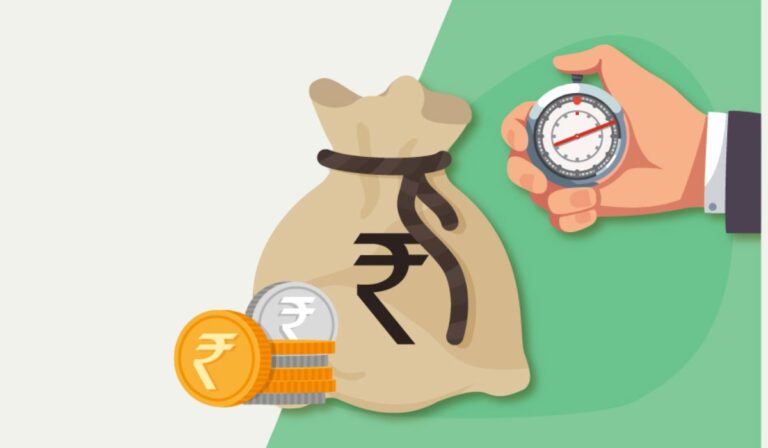In the time of emergencies, the person requires immediate access to the funds. Emergencies like unexpected medical expenses, home repair, and educational expenses require sudden cash flow. During these times of cash crunch, the person wants hassle-free access to funds without disturbing long-term savings. For people who have invested in fixed deposits, a loan against a fixed deposit is a practical option to get cash in their hands during times of need. It allows you to get a loan at a lower interest rate than other secured loans. In this article, we will dig into how a loan against a fixed deposit works, what its benefits are, and the risks involved in taking a loan against the FD plan.
What is a Loan Against Fixed Deposit?
A loan against a fixed deposit is a type of secured loan in which the person can keep the Fixed Deposit as collateral to get funds during emergencies. Without withdrawing or breaking the FD prematurely, the individual can pledge the FD to the bank to get funds against it. The Loan amount mostly ranges from 75% to 90% of the FD value, depending upon the bank’s policies.
As this loan is backed by the FD, it comes with a lower interest rate than other unsecured loans like personal loans. Interest is only charged on the borrowed amount, and the person can continue to earn interest on the FD. This makes it an attractive option as you can liquidate funds without breaking or comprising your savings.
How Does a Loan Against Fixed Deposit Work?
A loan against fixed deposit is a secured loan where your FD acts as the collateral to borrow funds without disturbing your savings. Here is how it works-
- Collateral: The bank keeps your Fixed Deposit as the collateral to provide you with the funds.
- Loan Amount: The loan amount is determined by the value of your Fixed Deposit. It can go up to 90% of the amount of the FD that is used as collateral.
- Interest Rate: The Interest rate on loans against FD schemes is lower than that on other secured loans. It is 1% or 2% more than the interest you are earning on your fixed deposit.
- Repayment: You can repay the loan amount whenever you like. There is no penalty, even for the prepayment of the loan.
- Interest on FD: You can continue to earn the interest on your Fixed Deposit while using it as collateral to borrow money.
What is the Eligibility Criteria for a Loan Against Fixed Deposit?
One must meet the following criteria to be eligible for a loan against a fixed deposit: –
- You need to be above the age of 18.
- You need to be a resident of India.
- You should have a fixed deposit with the bank from which you are applying for the loan.
- The lender will not accept the 5-year Tax Saving Fixed Deposit.
- The loan tenure cannot exceed the tenure of the Fixed Deposit.
What are the Interest Rates for a Loan Against FD?
As in a loan against a fixed deposit, FD acts as the collateral; thus, the rates of interest are lower than those of other secured loans. Generally, banks charge 1% or 2% more than the interest that you are earning on your Fixed Deposit.
For example, if you are getting an interest of 6% on your Fixed Deposit, then you will be charged around 7% or 8% on your loan against a fixed savings plan. This turns out to be a very affordable option to borrow money as it has a lower interest rate than other loans.
Here are interest rates for the Loan Against FDs from different banks: –
- HDFC Bank: 2% more than the FD interest rate.
- Federal Bank: 2% more than the FD interest rate.
- State Bank of India: 1% more than the FD interest rate.
- Axis Bank: 7.00% to 10.76%.
What are the Repayment Options for a Loan Against Fixed Deposit?
A loan against a fixed deposit offers flexible repayment options, allowing the borrower to choose the option that best suits their finances.
- Equated Monthly Installments (EMIs): Banks allow borrowers to repay the loan amount, which includes both the principal and the interest, in the form of EMIs. This method allows the borrower to schedule and pre-plan the payments according to the financial conditions.
- Bullet Payment (Lump-Sum Repayment): This option allows the borrower to pay the entire loan amount, including the interest, in one lump sum payment at the end of the loan tenure. This method can be beneficial when you are sure to receive funds soon to pay the whole amount in one payment.
- Interest-Only Payment: In this option, the borrower gets the chance to pay only the interest amount during the loan tenure and settle the principal amount at the end of the loan term, which lets the borrower avoid any immediate financial burden while letting the Fixed Deposit remain intact.
- Automatic adjustment Against FD: If the term of the loan and the FD maturity time coincide with each other, some banks offer you the option to get the loan amount deducted directly from the FD when it matures. This option simplifies the loan repayment.
These flexible loan repayment options make loans against fixed deposits suitable for people with varied cash flows who want funds for their emergency needs without disturbing their savings.
What are the Benefits of Taking a Loan Against Fixed Deposit?
A loan against fixed deposit is an ideal solution for those who want quick access to funds without disturbing or breaking their long-planned savings. This allows the borrowers to use their FD as collateral and provides fast access to funds without any hassle. Here are some major benefits of the loan against fixed deposit –
- No need for additional collateral
In a loan against a fixed deposit, the FD itself acts as the collateral, so there is no need to provide the bank with any other asset for security. This is a benefit for people who do not have any assets other than their savings when applying for a loan.
- Lower Interest Rate
As the Fixed Deposit is there to back up the loan, the interest on these loans is lower than other loans. Mostly, the interest rate is 1%-2% higher than the interest that you are earning on your FD.
- Quick Approval Process
As this loan is secured by FD, the documents required are minimal. In most cases, you just need to fill in a simple application, and the loan gets approved very quickly, which makes it a convenient choice when you need the funds urgently.
- No Prepayment Penalty nthly instalments, interest-only payments, or lump-sum repayments
Most banks in India do not charge any cost for the prepayment of the loan against the fixed deposit. This means you can repay the loan early without any additional cost, according to your financial planning.
- Credit Score Independence
As this loan is backed by a fixed deposit, banks are not concerned about the borrower’s credit score. This benefit of loans against fixed deposits makes them accessible to a wide range of customers, especially those with poor credit histories.
- Flexible Repayment Options
Borrowers can choose flexible repayment options, such as monthly instalments, interest-only payments, or lump-sum repayments. Some banks also allow automatic adjustments against the FD after its maturation.
Also, read: How to Get Pre-Approved for a Personal Loan.
What are the Risks of Taking a Loan Against Fixed Deposit?
While a loan against FD is convenient and a practical option to get funds in your hands without consuming your savings, there are some risks involved that should be considered by the borrower:
- Early Withdrawal of Fixed Deposit
If, for some reason, you want to withdraw your fixed deposit while it is pledged to the bank as collateral, you will need to repay the full amount of the loan with interest to withdraw the money from your FD. Early withdrawal of FD results in penalties and leads to a reduction in earnings through interest. This in the end reduced the overall value of FD, making it less profitable.
- Defaulting on Loan Repayment
In the case of default, the bank has the right to liquidate your FD and recover the amount of your loan. This will lead to the loss of your savings. While default in the case of a loan against FD does not affect your credit score as severely as it will be affected by default in the case of any other loan, it will still make an impact on your credit record.
- Potential Loss of Interest Earnings
If the Fixed Deposit is liquidated because of early withdrawal or default, you may lose some of the earnings from interest. Most banks reduce the interest rate on the premature FDs. This leads to lower income through the interest than you would have anticipated earlier. This will affect the overall financial growth, and the original purpose of FD, which is to earn interest over time, is compromised.
Understanding the risks involved in taking out a loan against fixed deposits will help you make an informed decision about whether this type of loan suits your needs and finances.
How to apply for a Loan Against FD?
Applying for a loan against FD is a very straightforward process. Here are the steps that you can follow to apply: –
- Check Eligibility and Interest Rates
Start by checking the eligibility criteria required and the interest rates offered by your bank for a Loan Against FD. Confirm if your bank account requires any specific eligibility. The loan’s value ranges from 75% to 90% of the value of your FD, and the interest can be 1% or 2% more than the interest you are earning from your FD.
- Gather Required Documents
In loans against fixed deposits, FD itself acts as collateral, so very few documents are required to apply for the loan. Usually, just the identity proof and address proof are required if not already on the file. In most of the banks, existing account holders do not require any additional documents.
- Submit Application and Documents
Visit your Bank’s branch to submit the application, or apply online if your bank provides that facility. After filling in all the details, submit the application form along with any required documents. If you are applying online, you will need to upload scanned copies of your required documents along with the application.
- Wait for Approval and Disbursement of Funds
Once your application is submitted, the bank will review it. As this loan is secured by FD, the approval process is generally quick. Within 2 to 4 days, the amount of your loan will be directly disbursed to your bank account.
By following these basic steps, you can efficiently apply for a Loan Against FD. This will give access to funds quickly during times of your needs while keeping your savings intact.
Frequently Asked Questions
- What is the maximum loan amount that can be availed against a fixed deposit?
The maximum loan amount that can be availed through a Loan Against FD usually ranges from 75% to 90% of the value of your FD. The exact percentage varies for different banks, so you should check your bank’s policies before applying for a loan.
- Can I apply for a Loan Against FD online?
Yes, many banks allow their customers to apply for a Loan Against FD online. If you have a bank account in the bank and use their net banking service or mobile app, then you can apply for your loan online.
- What are the interest rates for a loan against FD?
As the Fixed Deposit is there to back up the loan, the interest on these loans is lower than other loans. Mostly, the interest rate is 1%-2% higher than the interest that you are earning on your FD.
Also read,
This post is also available in: हिन्दी (Hindi)





